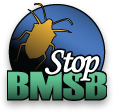Look-Alike Insects
Below are some of the more common insects that are often mistaken for BMSB.
Distinguishing characteristics of brown marmorated stink bug (BMSB)
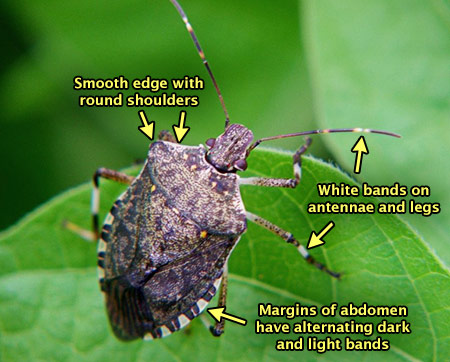 |
|
Brown marmorated stink bug (Halyomorpha halys). Photo by Steve Schoof. |
Euschistus spp.
The genus Euschistus includes several species of stink bugs that are similar in appearance and biology to H. halys. They are all brownish in color, and have a wide host range that includes field crops, vegetables, fruits, and nuts. Some of the more common include:
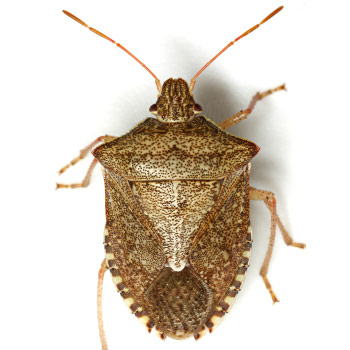 |
|
Brown stink bug (Euschistus servus) occurs throughout much of North America, but is most abundant in southeastern United States. Its shoulders are more pointed as opposed to rounded, and its bands on the antennae are yellowish and less apparent. Photo by Mike Quinn, TexasEnto.net. |
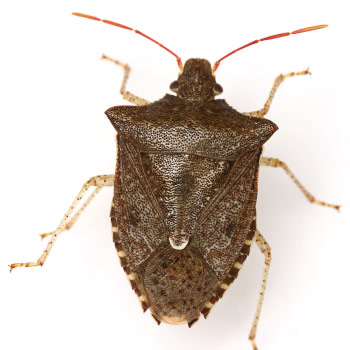 |
|
Dusky stink bug (Euschistus tristigmus) also occurs throughout much of eastern North America, but is generally less abundant than either E. servus or E. variolarius. Sides of pronotum (shoulders) are sharply pointed, without orange tip. Photo by Mike Quinn, TexasEnto.net. |
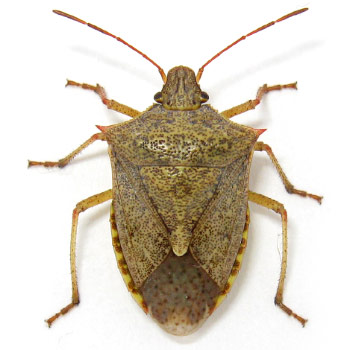 |
|
Onespotted stink bug (Euschistus variolarius) occurs throughout eastern North America and the Pacific Northwest, and in Canada from Quebec west to British Columbia. Pronotum (shoulder) is sharply pointed on the sides and often orange tipped. Males have a dark spot on the underside of the abdomen. Photo by roar, BugGuide.net. |
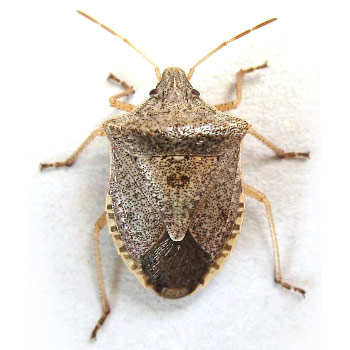 |
|
Consperse stink bug (Euschistus conspersus) is common in the western United States and British Columbia, Canada. A gray brown to green body with yellow to orange legs, and the antennae have darkened tips. Photo by J. Moore. |
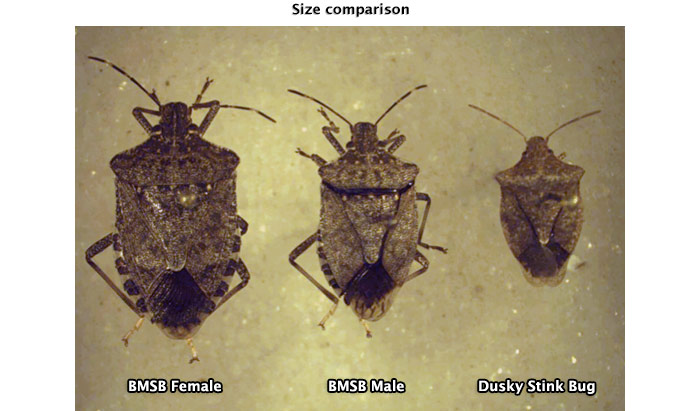 |
|
Photos by Brent Short, USDA ARS AFRS. |
Spined Soldier Bug
The spined soldier bug (Podisus maculiventris) is a common predatory stink bug that occurs throughout North America. Sides of pronotum pointed. The first segment of the proboscis (nose-like extension from the bug’s head) is shorter and thicker on the spined soldier bug versus BMSB. Antennae are often reddish.
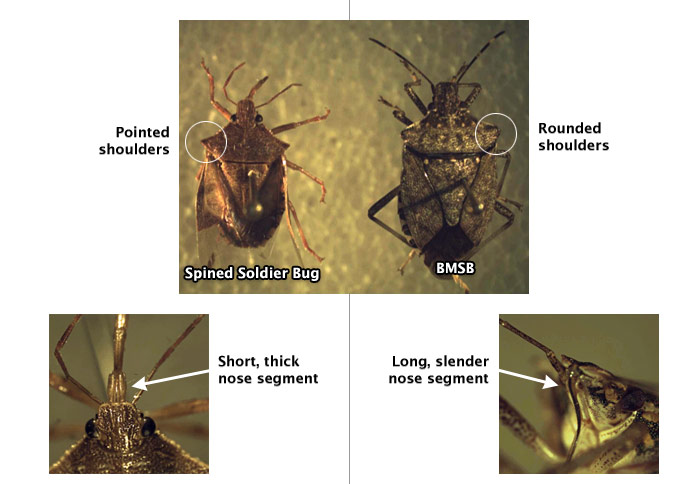 |
|
Photos by Brent Short, USDA ARS AFRS. |
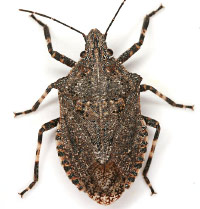 |
|
Rough stink bug (Brochymena quadripustulata). Photo by Mike Quinn, TexasEnto.net. |
Rough Stink Bug
Stink bugs in the genus Brochymena are commonly referred to as rough stink bugs, and are known to feed on both plants and other insects. Two of the more common species are B. quadripustulata and affinis. These species are relatively uniform brownish gray in color, and have a roughened, somewhat flattened appearance. The rough stink bug differs from the BMSB by the presence of a “tooth” on each side of the face and a row of spines on the shoulder area.
 |
|
Photos by Brent Short, USDA ARS AFRS. |
Other Insects Sometimes Confused with BMSB
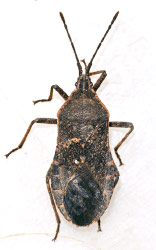 |
| Squash Bug (Anasa tristis). Photo: Stan Gilliam, CC license. |
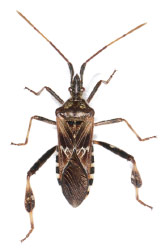 |
| Western Conifer-Seed Bug (Leptoglossus occidentalis). Photo: Kenneth Frank, CC license. |
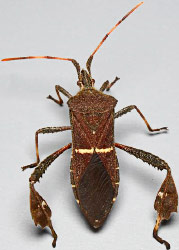 |
| Leaffooted Bug (Leptoglossus phyllopus). Photo: Iustin Cret, CC license. |
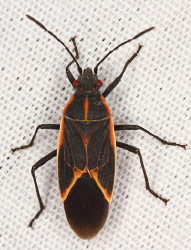 |
| Boxelder Bug (Boisea trivittata). Photo: Graham Montgomery. |
Additional Resources
Field Guide to Stink Bugs (PDF): This full-color guide provides identification information for stink bugs of agricultural importance in the upper southern region and mid-Atlantic states. Source: Virginia Cooperative Extension.
Stink bugs (Pentatomidae) and parent bugs (Acanthosomatidae) of Ontario and adjacent areas: A key to species and a review of the fauna: This website features identification keys to distinguish stink bugs by their species. Also available as a PDF file [29 MB].
